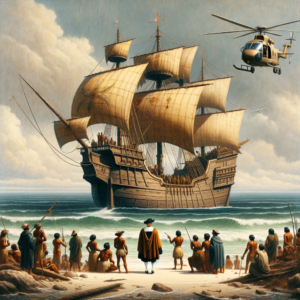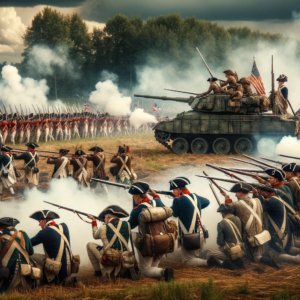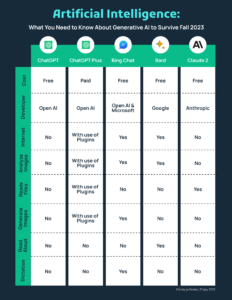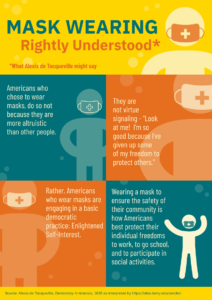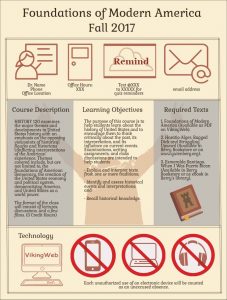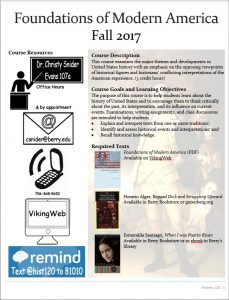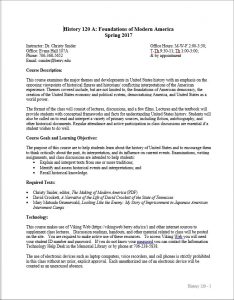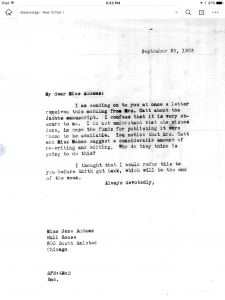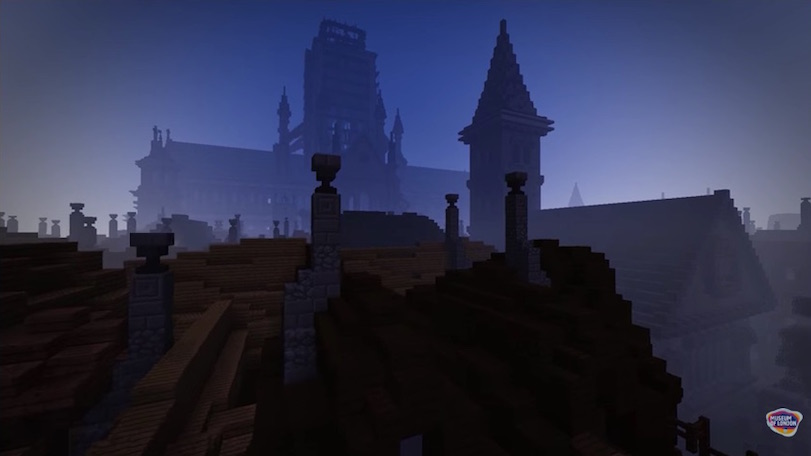1. Teaching & Course Development
| Use Case | Example Prompt |
|---|---|
| Explain a Complex Topic Engagingly | “Incorporate creative metaphors to explain the basics of [complex topic].” |
| Step-by-Step Problem Breakdown | “Break down the process for solving the [problem] into a fun, step-by-step explanation.” |
| Update a Syllabus with New Dates | “Take my existing syllabus for [course name], and update all due dates and meeting times for the new semester. Make sure to consult the official academic calendar of Berry College for holidays, breaks, and the final exam schedule.” |
| Visualize a Formula or Concept | “Provide a diagram or visual representation of the [formula or concept] to clarify how it works.” |
| Translate Code or Logic into Diagrams | “Convert the [programming logic] into an easy-to-follow flowchart or diagram.” |
| Case Analysis for Topic | “Create a case analysis to illustrate the core principles of [topic].” |
| Explain in the Style of a Famous Author | “Explain [complex topic] in the style of [famous author] to make it more engaging.” |
| Compare Misconceptions vs. Correct Ideas | “List the most common misconceptions about [topic] alongside correct examples to clarify misunderstandings.” |
| Use Mnemonic Devices | “Create memorable acronyms, rhymes, or visuals to help me recall [specific knowledge point].” |
| Organize via Table Comparison | “Use a comparison table to outline the main components of [knowledge point] and their key differences.” |
| Convert a Lecture into PowerPoint | “Turn the attached lecture into PowerPoint slides, focus on outline and keywords.” |
| Suggest Edits to Reduce Document Length | Review this document and suggest specific sentences or parts of sentences that can be cut. Provide the exact location of each suggested cut, and explain briefly why it can be removed without losing key content.” |
| Create a Chart | “Generate a chart illustrating [data]. Ensure the chart includes clear labels and percentages for each segment, and use a visually appealing, easy-to-read design.” |
| Gamify a Course | “Incorporate gamification elements into [course] using the attached syllabus to make the learning experience more interactive and fun.” |
| Foster Peer-to-Peer Learning | “Suggest three ways to encourage peer-to-peer discussions and knowledge sharing in a classroom setting.” |
| Improve Student Engagement | “Suggest several ways to increase student engagement in my course.” |
| Organize Group Project Based on Assignment Guidelines | “Organize a group project by assigning roles, developing detailed task lists, and creating a progress chart that allows group members to track individual and overall project progress based on attached assignment.” |
Additional Faculty-Focused Education Prompts
| Use Case | Example Prompt |
|---|---|
| Evaluate an Article as a Famous Scholar | “Provide a critical evaluation of this article as if you were [famous scholar’s name]. Focus on its argument, methodology, and contribution to the field. Identify strengths and weaknesses, and suggest how the author could refine their work.” |
| Hiring Committee Review of a C.V. | “Evaluate this C.V. as a member of a hiring committee for a [specific academic role]. Focus on research, teaching experience, service contributions, and overall fit for the position. Provide constructive feedback and suggest any improvements.” |
| Simulate a Grant Review | “Review this grant application as if you are a reviewer from [specific funding agency]. Evaluate the project’s feasibility, significance, methodology, and budget justification. Provide feedback and recommend whether it should be funded, along with any conditions or revisions.” |
| Summarize Peer Reviewer Comments and Provide Key Takeaways | “Summarize the peer reviewer comments for this article submission and extract key takeaways. Highlight the major feedback themes, areas for improvement, and suggested revisions. Conclude with actionable next steps for addressing the reviewers’ concerns.” |
| Adaptive Itinerary | “Update my 3-day itinerary for [conference] based on the latest weather forecast, emphasizing indoor activities.” |
| Summarize Course Evaluation Comments | “Analyze and summarize the open-ended comments from my course evaluations. Group the feedback into themes, highlight recurring suggestions, and provide a brief summary with actionable insights.” |
| Spotlight EdTech Trends | “List 5–10 emerging EdTech trends that could impact my academic department or teaching strategy.” |
2. Content Creation & Writing
| Use Case | Example Prompt |
|---|---|
| Summarize the Attached Paper into an Abstract | “Please read this attached paper on [topic] and draft a concise abstract (up to 250 words) highlighting the main argument, methodology, key findings, and conclusion. Ensure it accurately reflects the paper’s content and is accessible to newcomers.” |
| Generate Analogies | “Generate [number] simple analogies to help explain [complex or abstract concept].” |
| Extract Key Insights | “Identify [number] actionable insights from this case study on [topic].” |
| Market a Workshop | “In five sentences or fewer, show me how to promote an upcoming [cultural event/speaker] to attract undergraduate students.” |
| Rewrite Content in Different Styles | “Rewrite this text in [number] distinct styles: for example, professional, conversational, and narrative.” |
| Vary Presentation Pacing | “Create [number] pacing variations for this talk: a quick 2-minute elevator pitch, a 5-minute overview, and a detailed 15-minute version.” |
| Repurpose a Departmental Newsletter for Social Media | Take the content from our latest departmental newsletter and create short, engaging posts for Facebook, Instagram, and LinkedIn. Summarize each article, suggest relevant hashtags, and recommend one visual element for each post to boost engagement. |
| Blog or Newsletter Topics | “List five newsletter or blog topics that address [target audience]’s top concerns this year.” |
3. Administrative, Data Analysis, & Office Tasks
| Use Case | Example Prompt |
|---|---|
| Compose Meeting Minutes from Notes | “Take these rough notes of our departmental meeting and convert them into clear, concise minutes. Include a summary of key discussions, decisions made, action items, and any relevant follow-up tasks.” |
| Compare Multiple Options in a Table | “Use a comparison table to show the advantages and disadvantages of different [vendors, service plans, or resource options].” |
| Extract a Mind Map from a Document | “Summarize this lengthy whitepaper on [topic] into a clear mind map with main branches and sub-branches.” |
| Transcribe an Audio File | “Transcribe the attached .wav file into text, ensuring accurate transcription of spoken content. Identify speakers if applicable, and format the text into paragraphs for readability.” |
| Prioritize Daily/Weekly Tasks | Here’s my list of tasks for the week. Assign a priority level to each item (high, medium, low), suggest deadlines or time estimates, and organize them into a daily schedule that balances urgency, importance, and workload.” |
| Generate a Trend/Heat Analysis | “Produce a trend analysis report on [topic or dataset], highlighting key data patterns.” |
| Project Management with Gantt Charts | “Create a Gantt chart with milestones and parallel tasks for this upcoming [event/project].” |
| Summarize Key Data Points | “Automatically generate a list of the most important data points from this [report or dataset].” |
| Design Goal-Tracking Sheets | “Create personalized performance-tracking sheets for team members with Key Performance Indicator progress bars.” |
| SWOT Analysis | “Use SWOT analysis to outline our department’s strengths, weaknesses, opportunities, and threats. Compare us to similar departments in the Southern Athletic Association.” |
| Survey Results Analysis | “Analyze these survey responses and generate a summary report of main findings and recommendations.” |
| Cost-Benefit or ROI Analysis | “Provide a cost-benefit ratio for each line item in this [budget or proposed project], including multi-year projections.” |
4. Marketing & Outreach
| Use Case | Example Prompt |
|---|---|
| Precise Marketing Scripts | “Generate [number] marketing scripts that speak directly to [specific persona] for our college programs.” |
| Co-Branding or Partnership Ideas | “Propose [number] collaborations with local organizations for our new campus initiative.” |
| Behavioral Economics in Promotions | “Use principles of behavioral economics to optimize our student recruitment campaign.” |
| Viral Campaign Concepts | “Generate [number] creative social media campaign ideas to boost engagement among prospective students.” |
| Mapping the Student/Donor Journey | “Convert this admissions funnel or donor pathway into key touchpoints, highlighting the crucial interaction points.” |
| Brand Awareness Test | “Design [number] survey questions to measure how well prospective students recognize our updated branding.” |

